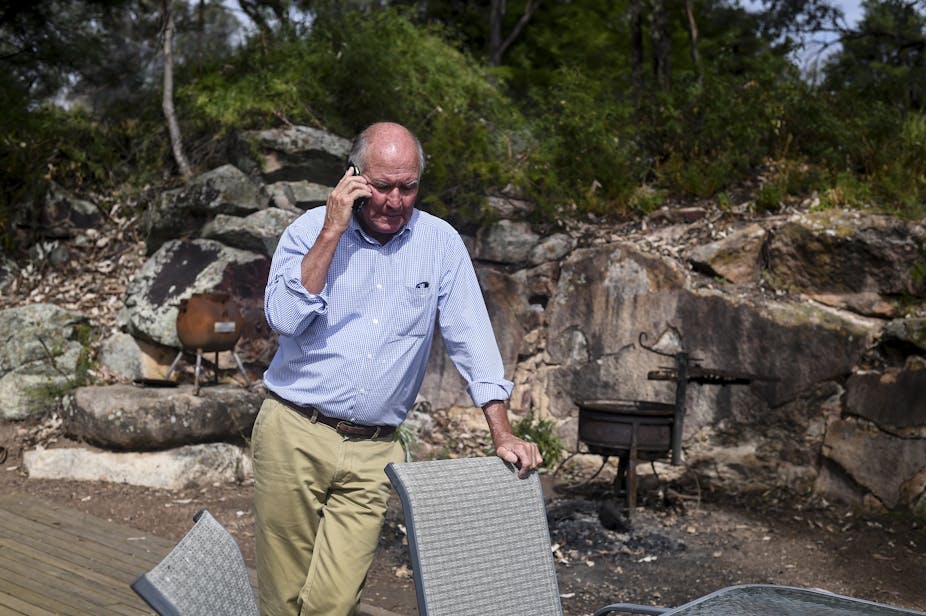This week the Productivity Commission released an issues paper as part of an inquiry into the adequacy of Australia’s Universal Service Obligation (USO) for telecommunications, in light of changes in technology and demand.
The USO was formulated in a different age when the internet was in its infancy. Today, its requirement to provide access to standard telephone services and payphones to all Australians is akin to mandating the availability of horse and buggies by carmakers operating in the age of the Tesla.
Indeed, Australia’s USO probably needs to be considered in the light of a largely converged and complex telecommunications environment.
The issue is shaping up as a sleeper in the current federal election, especially in the bush. During Tuesday night’s episode of Q&A, telecast from regional Tamworth (400 km north of Sydney), the issue featured prominently. Tony Windsor, who is running as an independent candidate against deputy prime minister Barnaby Joyce in the seat of New England, received the biggest cheer of the night when he said of telecommunications infrastructure: “do it once, do it right and do it with fibre”.
City dwellers might be forgiven for thinking that this is the latest, high-tech version of the “whingeing farmer” syndrome. They would be wrong. Rural Australia has very real and legitimate concerns regarding the growth and probable permanency of the digital divide.
For many years regional Australians have had to contend with demonstrably inferior internet speed and reliability than their fellow Australians. This problem is compounded by the fact that their need for broadband services is greater than their urban cousins due to the importance of broadband for education, healthcare and business.
These additional connectivity requirements are increasing exponentially as technologies like Smart Farming, remote sensing and genomics create vast amounts of data. These are agricultural examples of the Internet of Things - an emerging paradigm that promises huge improvements in agricultural efficiency and environmental management, but requires constant and unconstrained internet access.
Like most public policy dilemmas, it’s all about money. Labor’s initial policy was full Fibre to the Premises (FTTP - the Rolls Royce option) but its policy these days is looking increasingly similar to the Coalition’s - with both looking quite different from Tony Windsor’s “do it with fibre” admonishment.
It has been estimated that the full FTTP option to all (or the vast majority) of Australian homes and businesses would cost an additional $30 billion. In the context of Australia’s current and likely future fiscal situation, this has been seen in Canberra as too much to spend.
The reality on the ground (or in fact in orbit) is the NBN’s Sky Muster satellite (launched in 2013 and switched on this month, with another launch soon to follow). According to an NBN spokesperson, there are 600 technicians connecting homes as fast as they can and by mid-year 2017 around 85,000 premises will be connected.
This multi-billion dollar investment certainly improves internet access for rural and remote Australians but it also sets a constraint as to what regional Australians should expect in the future.
Sky Muster is decidedly akin to a Holden Commodore (but at least not a Kingswood) in comparison to the FTTP’s Rolls Royce. It’s fair to say rural users are generally much happier with these new services than the historical interim arrangements. However it is also clear that what Sky Muster offers will be inferior to what is being offered in the cities, potentially cementing for the foreseeable future regional Australia’s “second class” status.
The essential problem with Sky Muster and similar satellites are their innate physical limitations. While this is true of all network technologies, there is real concern that user demand, especially at peak times, will quickly overwhelm the satellites’ capacities creating the need for ISPs to shape user download speeds.
One consequence of this will be downtime for important synchronous activities like e-conferencing and the like, but also a lack of functionality in the emerging IOT systems that require an unconstrained, always-connected network state.
Another problem relates to cost. Urban consumers are used to paying around $100 per month for unlimited and relatively reliable broadband complementing fast 4G cellular when they are away from home. Early Sky Muster plans are slower and offer far less data, especially during peak times when people are actually awake.
Rural communities are rightly concerned that the launch of Sky Muster may well be as good as it gets. While this is clearly better than what the country people have had, the divide between the bush and the cities in this and other areas is seemingly becoming wider and more permanent.
So, as the Productivity Commission grapples with the question of what the USO should look like in 2016 it will really need to consider what it should look like in a decade or two. This question will challenge the Commission’s rationalist economic predilections.
The answer relates not so much to the current and future economics of accessing the internet but more so the nature of fairness in Australia. The key question is how willing we are as a nation to see rural Australia fall further behind the cities in this fundamental aspect of our national infrastructure.

